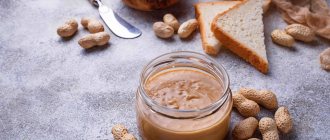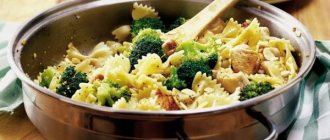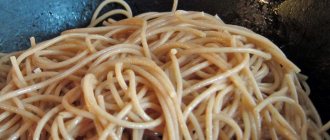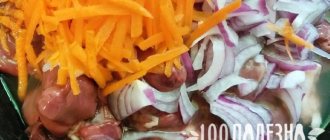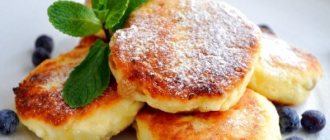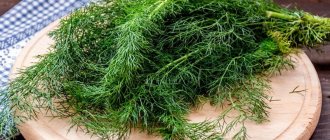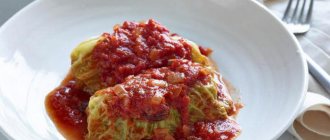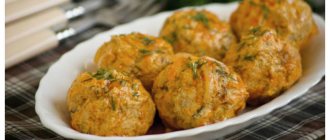Chemical composition and calorie content
The benefits and harms of peanut butter for the human body are determined by the composition of the product and, above all, its calorie content. Its composition (per 100 g) includes an average of 20 carbohydrates, 20 g of protein and 50 g of fat.
Important! Although peanut butter is rich in protein, it lacks the amino acid methionine, making it not recommended as a substitute for meat and other quality proteins.
This chemical composition makes the product suitable for a low-carbohydrate diet. It is also recommended for people with low blood sugar.
Almost 50% of peanut butter forms fat in a ratio of saturated to unsaturated fatty acids similar to olive oil. These fats reduce heart disease and normalize cholesterol in the blood. After using 1 tsp. vegetable paste, you will get about 15 g of fat.
2 tablespoons of nut butter contain up to 8 g of protein and 2-3 g of fiber. It also contains a large amount of vitamins, incl. E and B3, minerals.
The healthy product is quite high in calories: 2 tablespoons = approximately 200 kcal. Therefore, if you are watching your body weight or on a weight loss diet, reduce this portion by half. Also avoid flavored and sweetened types of nut butter - due to the content of a number of additives, a valuable product turns into a tasty, but useless, and sometimes even harmful dessert.
With honey
With a little time and available ingredients, in a matter of minutes you can prepare the much-loved peanut butter, which the local population learned about from American films.
Composition of ingredients
To prepare the paste you need to buy the following ingredients:
- raw peanuts - 300 g;
- vegetable oil without aroma - 50 ml;
- honey - 10 g;
- sea salt - 3 g.
Step by step process
- Initially, you should dry the nuts in the oven, placing them evenly on a baking sheet for 10-12 minutes at 180 degrees.
- Then, by rubbing the cooled nuts in the bag with your hands, remove the skins from them.
- The peeled kernels with honey, salt and oil should be placed in a blender bowl and blended until a paste consistency is obtained. In the first minutes of beating, it will look like dry crumbs, which will gradually become fatty and bind into a stiff mixture.
- Next, it is recommended to transfer the finished paste into a glass jar and leave it in the cold.
What can I add?
In this recipe, you can replace honey with sugar and use any other vegetable oil.
How to serve the dish
The paste is usually served as a cream for cookies and muffins. You can also use it to create sauces, marinades, gravies and salads.
Peanut butter is a great spread on toast and jam for breakfast.
Calorie content per 100 g and nutritional value of peanuts
Nutritional value of peanuts (100 g):
- kJ – 2450;
- kcal – 580;
- protein – 20 g;
- carbohydrates – 20 g;
- fiber – 9 g;
- fat – 49 g;
- water – 2 g.
Minerals (mg/100 g):
- iron – 3;
- calcium – 50;
- magnesium – 160;
- phosphorus – 370;
- potassium – 650;
- sodium – 6;
- zinc – 3;
- selenium – 0.009;
- copper – 1;
- manganese – 2.5;
- omega-3 – 3.4;
- omega-6 – 15000.
Vitamins (mg/100 g):
- B1 – 0.6;
- B2 – 0.2;
- B3 – 15;
- B5 – 2;
- B6 – 0.4;
- B9 – 0.150;
- E – 8.
With dates
This pasta recipe is perfect for breakfast or a snack.
Composition of ingredients
To obtain a delicious spread of the correct consistency, you need to prepare the following elements:
- 300 g peanuts;
- 100 g dates;
- 3 g salt;
- 35 ml coconut milk.
Step by step process
- Peanuts need to be fried in a frying pan for 5 minutes. or dry in the oven for 10 minutes. on a baking sheet at 170 degrees. Then you should remove the husk from it.
- Dates should be peeled and pitted.
- It's time to place the dates with peanuts and salt in the blender bowl. These components should be whipped to a homogeneous consistency at high power.
- Next, vegetable oil should be added to the resulting mass to improve the consistency.
- The finished treat should be placed in a container with a tight-fitting lid and left in the cold.
What can I add?
According to this recipe, coconut milk can be replaced with refined sunflower oil or excluded from the recipe altogether.
How to serve the dish
Such a healthy and nutritious treat, accompanied by any flour product or without it, goes perfectly with a cup of aromatic tea or natural coffee.
Properties of peanut butter
In the absence of allergies, the beneficial properties of peanut butter for women, men and children are beyond doubt. But its consumption should not be exaggerated. Since the product contains healthy vegetable fats, it has a positive effect on the growing body and also slows down aging.
How does peanut butter affect the body - benefits for humans:
- support of digestion, regular bowel movements;
- long-term saturation, constant supply of energy;
- normalization of glycemic levels;
- prevention of vascular and heart diseases;
- normalization of cholesterol levels, blood pressure;
- support muscle growth.
Benefits of peanut butter
Nut butter is very beneficial for the human body. Thanks to the content of healthy fats, a high percentage of protein, fiber, a number of vitamins and minerals, it has a complex effect on the body.
Polyunsaturated fatty acids
The peanut product contains a number of “good” – monounsaturated and polyunsaturated – fats. In 2 tbsp. contains 8 grams of monounsaturated fat and 4 grams of polyunsaturated fat. These fats help lower cholesterol, blood pressure, and reduce the risk of heart disease. They also have an anti-inflammatory effect, which can help in eventual recovery from illness and reduce the risk of metabolic syndrome.
Polyunsaturated fatty acids belong to the omega-6 category. Their deficiency can lead to a number of disorders, including:
- joint pain;
- chest pain;
- PMS;
- tingling in the arms and legs;
- hypertension;
- heart and blood disorders;
- tendency to form tumors;
- indigestion.
Protein
Both the nut itself and nut products are a natural source of protein. Its presence in the diet is a necessary condition for proper cellular function. Protein also plays an important role in protein synthesis, muscle recovery and growth.
2 tbsp. Peanut butter provides about 7-8 g of protein.
Important! A deficient amino acid present in nut butters in insufficient quantities is lysine. Therefore, when using the product as a source of protein, enrich it with 2 eggs or legumes.
Vitamins and minerals
What other components contained in peanut butter make it so beneficial for the body? These are, in particular, the following substances.
- Potassium. If your diet is high in salt, then potassium is a very beneficial ingredient for you. It reduces the negative effects of salt on the cardiovascular system. Potassium also has a positive effect on the nervous system. 1 teaspoon of paste supplies the body with 250 mg of potassium.
- Cellulose. Although peanut butter is not ideal in terms of fiber content, 1 scoop still contains about 1 g of dietary fiber. This substance suppresses hunger and helps with heart disease.
- Tryptophan. It is a component that promotes the formation of serotonin in the body and thus improves mood.
- Niacin. Vitamin B3 (niacin) supports healthy skin, digestive system, and helps lower cholesterol.
- Vitamin B6. This vitamin supports the nervous system.
- Folic acid. Vitamin B9 is beneficial for pregnant women. In addition, the body uses it to produce red blood cells. It is also useful for children, because... together with iron it prevents anemia.
Antioxidants
Vitamin E is one of the most important antioxidants in the human body. This vitamin protects the body from free radicals and helps fight cancer and other diseases of civilization.
Peanut butter is harmful
In addition to beneficial components, peanut butter contains substances that have harmful properties. These are protein structures, lectins. They are difficult to digest and can be toxic.
In other legumes, lectins are destroyed during cooking and are therefore harmless.
When consuming nuts and products made from them, lectins enter the intestines and blood. In addition to minor intestinal inflammation, they can trigger the development of autoimmune diseases such as celiac disease or Crohn's disease.
High calorie content
The main reason why such a healthy product as peanut butter is included in the “black list” of nutritionists is its calorie content. 2 tbsp. Pastas provide up to 10% of daily calorie intake. And that's a lot. By eating a few sandwiches with a tasty addition, you can consume 50% of your daily calorie intake.
Allergenicity of the product
Peanuts are the largest known allergen. And this is a reasonable factor in its harm. If you're not sure if you have a nut allergy, eat (just a little!) for the first time under the supervision of another person. If an adverse reaction occurs, you can count on help.
Poor quality composition
There are 2 types of peanut butter: “smooth” and “crunchy”. As the name suggests, the crunchy product contains coarser pieces of peanuts, while the smooth product contains ground nuts into powder.
Although both products may seem different in terms of composition, they are actually very similar. The differences mainly lie in the additional additives, i.e. sugar, vegetable oil, etc.
Proper, healthy pasta is made only from peanuts. Added salt and sugar affect its mineral composition. Salt increases the sodium content to 150 mg/100 g.
Store-bought peanut butter often contains trans fatty acids. The negative effects of salt and these acids interfere with the positive effects of the nut itself on human health.
Therefore, when purchasing a food product, always check the packaging to see if it contains trans fatty acids. If possible, avoid added sugar.
Possible contraindications
Categorical contraindications when you can’t eat peanut butter:
- allergy;
- obesity.
Conditions where it may pose a health threat (it is advisable to consult a doctor):
- high cholesterol and lipids;
- diabetes.
Types of nut butter
Even if at first glance all nut butters seem the same, this is far from true! The first difference that affects the composition, taste, consistency and nutritional value is the type of nuts from which the paste is made.
Main types of nut butter:
- peanut paste
- cashew paste
- almond paste
- hazelnut oil
- pistachio paste
- nut butter made from several types of nuts
Nut butters according to consistency
The paste, according to its consistency, is divided into smooth (smooth) and crunchy (crispy paste with crunchy pieces of nuts) . But what is characteristic of each species? [1]
Smooth nut butter
Smooth nut butter, called smooth , has a smooth and creamy consistency. The nuts are thoroughly ground, and their creamy texture makes them easy to spread on bread and use in cooking.
Crunchy nut butter
Crunchy nut butter contains crunchy pieces of nuts . Suitable for cooking, baking or making smoothies.
Classification of nut butter according to the proportion of nuts
100% nut butter
100% Nut Butter and Nut Butter ensures you're eating real nut butter . Since this paste does not contain any additives (such as salt, sugar, palm oil, fruit pieces), it is one of the healthiest pastas .
Pasta with additives
Additives are added to some pastes to improve taste , consistency or extend shelf life. This is, for example, nut butter with the addition of chocolate or pieces of fruit . However, their disadvantage is that they may contain a higher proportion of sugar . Salt or jaggery are also common additives
A special category among enriched spreads are protein nut butters , which are fortified with one or more types of protein . These pastes are especially popular among athletes as they help meet the required daily protein intake.
Homemade dessert recipe
Now let's look at some useful recipes for making peanut butter. A homemade product is the healthiest, because it contains only high-quality ingredients.
Classic, simple and healthy peanut butter
Ingredients:
- 2 tbsp. peanuts (can be roasted, but do not add salt when roasting);
- ¼-½ tbsp. salt.
Grind the nuts in a blender on low speed. Once it reaches a creamy consistency (about 2-3 minutes), switch to medium speed. Continue mixing until the paste is completely smooth. Add ¼ tsp. salt, stir for 20-30 seconds, add if necessary.
Transfer the resulting product to a suitable container and refrigerate (for 8 hours or overnight) to obtain the traditional consistency.
Nut butter with stevia
Ingredients:
- 4 tbsp. peanuts (can be fried);
- a few teaspoons of stevia;
- ¼ tsp. salt (or less);
- 1 tbsp. coconut oil.
Prepare the paste as in the previous recipe, add stevia and coconut oil along with salt.
Classic recipe
This recipe makes a hearty and flavorful appetizer. Thanks to the vegetable oil in the composition, the shelf life of the product increases.
Composition of ingredients
To create the paste you need to prepare the following products:
- 0.35 kg peanuts;
- 10 ml vegetable oil;
- 12 g sugar;
- 3-4 salts.
Step by step process
- First you need to fry the peanuts in a dry frying pan or dry them in the oven for 15 minutes at 200 degrees. It is important not to overcook it so as not to burn it. You can also use a microwave oven for these purposes - 5 minutes is enough. at high power.
- Then it's time to place the cooled peanuts in a plastic bag, close it and rub it with your hands. The nuts shed their skins so quickly and remain clean.
- After this, the peanuts removed from the bag should be placed in a blender, add butter, salt and sugar to the bowl. Grind these ingredients until you obtain a homogeneous paste-like mass.
- The finished mixture should be transferred to a glass jar and stored in the refrigerator for no more than 2 weeks.
What can I add?
To obtain a thicker consistency of the paste, it is allowed not to add vegetable oil, since a sufficient amount of it is released from the peanuts when whipped. Salt and sugar should be adjusted depending on personal preference.
How to eat peanut butter
It is ideal to start a new day with a healthy nut product - it will be an excellent part of both sweet and salty breakfast, it will provide the body with carbohydrates and protein, activate the metabolism, and fill you up for a long time.
If you're going to a sports practice, also treat yourself to a healthy treat. It is suitable not only for “jocks”, but also for runners - increased consumption of proteins and minerals is necessary for all sports.
For athletes
What are the benefits of peanut butter for athletes, how to consume a healthy product? It is widely used in sports nutrition because... helps build muscle mass and increases the endurance of athletes. We are talking about a source of healthy fats, an alternative to animal sources of fat. You don't have to eat a kilogram of pasta in a week. 2-4 tsp is enough. in a day.
Pregnant
Eating nut products during pregnancy is a controversial issue. According to some experts, in the absence of allergies, we are talking about suitable foods while bearing a child. Nuts provide support for the proper development of the fetus and support the health of the expectant mother. But if adverse reactions of the body appear after consuming them, a stop is required - exclusion of nuts from the diet and consultation with a doctor.
Important! Consumption of nuts and products made from them during pregnancy (up to 4 tsp per day) by women who are not allergic to them can subsequently prevent allergic reactions in children.
When breastfeeding
Protein from peanuts passes into breast milk. But this does not mean there is a risk of allergies in the child. A study published in the Journal of Allergy and Clinical Immunology in 2008 found that in Israel, where nuts are a common part of the diet of breastfeeding mothers and children from 8 months of age, there were lower rates of nut allergies than their British counterparts. peers.
Start using ½-1 tsp, watch your and your child’s body’s reaction.
Harm and contraindications
Harm from excessive consumption of pasta manifests itself in the form of excess body weight gain.
If you have a peanut allergy, you may experience:
- sore throat;
- swelling of the lips and tongue;
- itchy skin;
- swelling of the throat, which can block the airway.
Contraindications for use:
- stomach diseases in the acute phase (ulcers, gastritis);
- individual intolerance to peanuts;
- arthritis, arthrosis, urea deposition in joints;
- gout.
With cereal
This recipe will appeal even to children who do not like oatmeal but prefer peanut butter.
Composition of ingredients
To prepare the dish you will need the following ingredients:
- oatmeal - 2 tbsp;
- peanut butter - 70 g;
- liquid sweetener - 75 ml;
- coconut oil - 25 ml;
- cinnamon - 1 tsp;
- vanillin - 10 g;
- salt - 4 g;
- flax seeds - 3 tsp.
Step by step process
- The first step is to heat the coconut oil with the paste and sweetener in a saucepan over low heat. When the mass acquires a liquid consistency, it’s time to add salt, vanilla and cinnamon to it, then mix until smooth.
- You need to add the flakes to the resulting sauce, mixing them evenly.
- Place parchment paper on a baking sheet and spread the mixture evenly over it.
- Place the dough in the oven for 25-30 minutes. at a temperature of 150 degrees.
- Pour the cooled dish into a container that can be hermetically sealed.
What can I add?
Oatmeal can be replaced with another type of cereal or granola.
How to serve the dish
This dish is convenient to use as breakfast, especially if you don’t have time to cook it. You can leave the preparation in the refrigerator and use it in the morning.
With yogurt
Peanut butter, which is quite high in calories, in a small volume can saturate the body with useful substances and be a complete breakfast, lunch or dinner in combination with flour elements.
Composition of ingredients
To make a rich and original pasta, you need to use the following components:
- natural yogurt without additives - 200 ml;
- peanuts - 250 g;
- honey - 30 ml;
- sunflower oil - 20 ml.
Step by step process
- The first step is to dry the peanuts in the oven or microwave. Then remove the skins from it and grind in a blender until smooth.
- Next, it’s time to add oil and honey to the paste and beat everything again at high power.
- In a separate bowl, you can combine 200 ml of yogurt with 3 tbsp. l. peanut butter and stir with a spoon. The dish is ready to eat.
What can I add?
In this recipe, you can replace sunflower oil with olive or coconut oil. You can also add sugar to the mixture instead of honey.
How to serve the dish
This dish can be called an ideal breakfast in combination with slices of apples, pears and other fruits. It should be served in a bowl.
